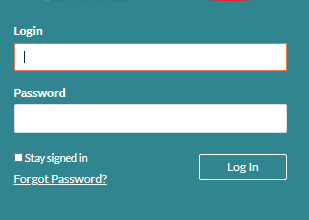Everything About 10.24.1.53 – A Private IP Address

Introduction
IP addresses play a crucial role in networking, allowing devices to communicate with each other over local and global networks. One such IP address, 10.24.1.53, falls within the private IP address range. In this article, we will explore what this means, how private IPs function, and their significance in networking.
What is 10.24.1.53?
10.24.1.53 is a private IP address that belongs to the 10.0.0.0/8 block, which is reserved for private use by the Internet Assigned Numbers Authority (IANA). This means it cannot be accessed directly from the internet and is commonly used within local networks, such as homes, offices, and data centers.
Private vs. Public IP Addresses
IP addresses are categorized into public and private:
- Public IPs are unique and assigned by Internet Service Providers (ISPs) for direct internet access.
- Private IPs, including 10.24.1.53, are used within local networks and require Network Address Translation (NAT) to connect to the internet.
Private IP Address Ranges (RFC 1918)
Private IP addresses are defined by RFC 1918 and include:
- 10.0.0.0 – 10.255.255.255 (Class A)
- 172.16.0.0 – 172.31.255.255 (Class B)
- 192.168.0.0 – 192.168.255.255 (Class C)
Since 10.24.1.53 falls within the 10.0.0.0/8 range, it is a Class A private IP address.
Uses of 10.24.1.53
- Local Area Networks (LANs) – Businesses, educational institutions, and data centers use private IPs to assign unique addresses to devices.
- Network Security – Private IPs help isolate devices from direct internet exposure, reducing cyber threats.
- DHCP Assignment – Many routers use Dynamic Host Configuration Protocol (DHCP) to automatically assign IPs like 10.24.1.53 to devices.
- Server Hosting – Internal web, file, or database servers often use private IPs to facilitate local communication.
Accessing 10.24.1.53
Since 10.24.1.53 is private, it can only be accessed within the internal network. To check its usage:
- On Windows: Open Command Prompt and run
ping 10.24.1.53. - On Linux/macOS: Use the terminal command
ping 10.24.1.53.
If the IP responds, it means a device is assigned this address in the network.
Configuring and Managing 10.24.1.53
Administrators can configure 10.24.1.53 manually or dynamically using a router’s settings:
- Static Assignment – Assigning the IP manually in device settings.
- DHCP Reservation – Configuring the router to always assign 10.24.1.53 to a specific device.
- Subnetting – Determining how 10.24.1.53 interacts with other devices based on subnet masks (e.g., 255.255.255.0).
Troubleshooting Issues with 10.24.1.53
If a device using 10.24.1.53 faces connectivity issues:
- Ensure there’s no IP conflict (another device using the same IP).
- Check the router’s DHCP settings.
- Restart the router and the device.
- Use
tracertortraceroutecommands to diagnose connectivity problems.
Conclusion
10.24.1.53 is a private IP address commonly used in local networks for secure and efficient device communication. Since it is not accessible from the internet, it enhances security while allowing seamless internal networking. Understanding private IPs like 10.24.1.53 helps in managing and troubleshooting networks effectively.
FAQs About 10.24.1.53 – A Private IP Address
1. Is 10.24.1.53 a public or private IP address?
10.24.1.53 is a private IP address because it falls within the 10.0.0.0 – 10.255.255.255 range, which is reserved for private networks (RFC 1918).
2. Can I access 10.24.1.53 from the internet?
No, private IP addresses like 10.24.1.53 are not routable on the internet. They are used within local networks and require Network Address Translation (NAT) to access the internet.
3. Why is 10.24.1.53 used in my network?
Your router or network administrator might have assigned 10.24.1.53 to a device using DHCP (Dynamic Host Configuration Protocol) or a static IP configuration. It helps in local communication between devices.
4. How do I check if 10.24.1.53 is in use?
You can use the ping command:
- Windows: Open Command Prompt and type
ping 10.24.1.53. - Mac/Linux: Open Terminal and type
ping 10.24.1.53.
If there is a response, a device is using the IP on your network.
5. Can two different networks use 10.24.1.53?
Yes, since 10.24.1.53 is a private IP, multiple separate networks (e.g., different offices or homes) can use it without conflicts. However, within a single network, each IP must be unique.
Also Read: From Passion to Profit: Creative Business Ideas for New Entrepreneurs
6. How do I assign 10.24.1.53 to a device?
You can assign it:
- Manually (Static IP): In network settings, specify 10.24.1.53 as the device’s IP.
- DHCP Reservation: Configure your router to always assign 10.24.1.53 to a specific device.
7. What happens if two devices have 10.24.1.53?
An IP conflict occurs, causing network issues for both devices. To resolve this, check your router settings and ensure only one device is assigned the IP.
8. Is 10.24.1.53 a default IP for any router or device?
No, 10.24.1.53 is not a commonly used default router IP. Routers typically use addresses like 192.168.1.1 or 10.0.0.1 as their default gateway.
9. How do I troubleshoot connectivity issues with 10.24.1.53?
- Ensure no IP conflict exists.
- Restart your router and device.
- Check your device’s network settings.
- Run
ipconfig /all(Windows) orifconfig(Linux/macOS) to verify the assigned IP.
10. Can I use 10.24.1.53 for a local server?
Yes! You can assign 10.24.1.53 to a web server, file server, or database server within your private network. However, external users will need port forwarding and NAT to access it from the internet.
11. Is 10.24.1.53 safe from hackers?
Since it is a private IP, it is not directly exposed to the internet, making it more secure. However, internal network security measures (firewalls, strong passwords) are still necessary.
12. How do I change 10.24.1.53 to another IP?
- If assigned dynamically (DHCP), restart the device or configure the router’s DHCP settings.
- If assigned statically, update the network settings on the device.
13. Can 10.24.1.53 be used in VPNs?
Yes, private IPs like 10.24.1.53 are commonly used in VPN networks for secure internal communication.
14. What is the subnet mask for 10.24.1.53?
The default subnet mask for Class A networks (10.x.x.x) is 255.0.0.0, but many networks use 255.255.255.0 for smaller subnets.
15. How does 10.24.1.53 interact with the internet?
Since 10.24.1.53 is a private IP, it cannot access the internet directly. Instead, it uses NAT (Network Address Translation) on a router to communicate with public IP addresses.




